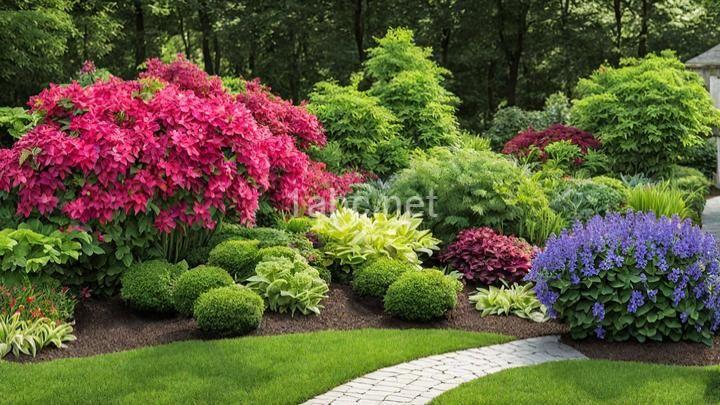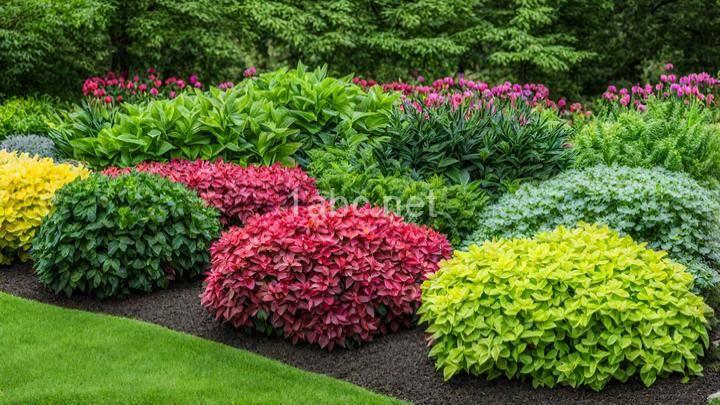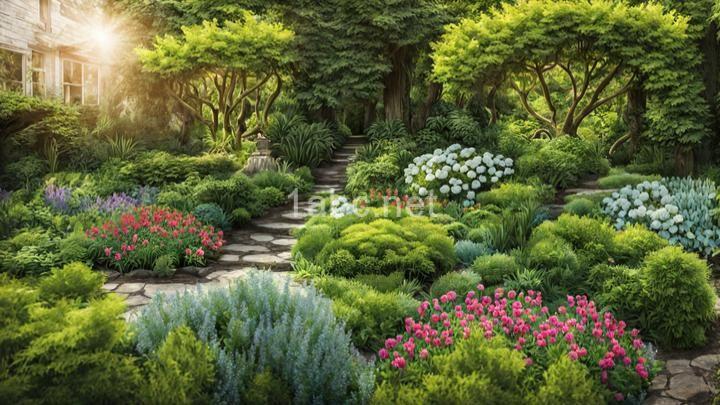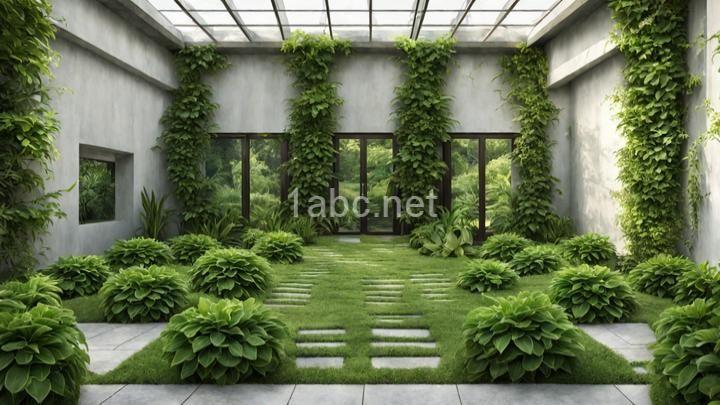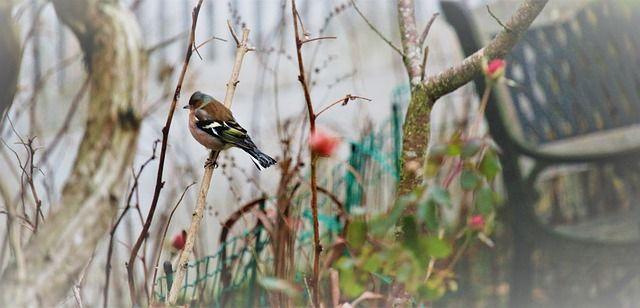Exploring the Beauty of Shade Plants: A Guide to Selecting and Caring for Them
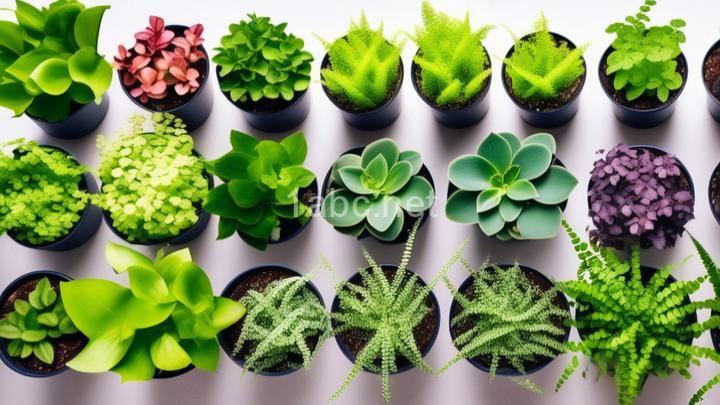
Introduction:
Welcome readers to the world of shade plants! In this guide, we will be exploring the beauty and versatility of shade plants in gardens or indoor spaces. Whether you have a shady spot in your backyard or want to add some greenery to a dimly lit room, shade plants can be the perfect solution. Our goal with this guide is to help you select and care for shade plants successfully, ensuring that they thrive and bring joy to your space.
Section 1: Understanding Shade
To start, let's define what shade is and its importance for certain plants. Shade refers to an area that receives limited or no direct sunlight. While some plants thrive in full sun, others prefer the sheltered conditions provided by shade. Understanding the different types of shade is crucial to determine which plants will thrive in your specific environment. There are three main types of shade: light shade, partial shade, and full shade.
Light shade refers to areas that receive dappled sunlight or filtered light throughout the day. This type of shade is ideal for plants that can tolerate some sun exposure but still require protection from intense midday rays. Partial shade refers to areas that receive a few hours of direct sunlight, usually in the morning or late afternoon. Plants that prefer partial shade can handle more sun exposure than those in light shade but still require protection from the scorching midday sun. Full shade refers to areas that receive no direct sunlight. These areas are typically under dense tree canopies or on the north side of buildings. Plants that thrive in full shade are adapted to low-light conditions and can survive with very little to no sun exposure.
Assessing the amount of shade in a specific area is essential to ensure you choose the right shade plants. Observe the area at different times of the day and note how much sunlight it receives. This will help you determine the type of shade present and select plants accordingly.
Section 2: Choosing the Right Shade Plants
Now that we understand the different types of shade, let's dive into choosing the right shade plants for your space. It's crucial to select shade-loving plants that thrive in low-light conditions. Fortunately, there is a wide variety of shade plants to choose from, each with its unique beauty and characteristics.
Ferns are a popular choice for shady areas due to their elegant fronds and ability to thrive in low-light conditions. They come in various sizes and textures, making them a versatile addition to any garden or indoor space. Hostas, with their striking foliage and vibrant colors, are another excellent choice for shade gardens. They are known for their adaptability and ability to withstand different types of shade. Impatiens, also known as busy Lizzies, are beloved for their colorful flowers and ability to brighten up even the darkest corners of a garden.
When selecting shade plants, it's essential to consider their care requirements. Some shade plants prefer moist soil, while others can tolerate drier conditions. Make sure to read the care instructions for each plant and choose ones that align with your gardening capabilities and preferences. Additionally, consider any unique characteristics of the plants, such as their growth habits or flowering seasons, to create a well-rounded and visually appealing garden.
Section 3: Planting and Caring for Shade Plants
Once you have selected your shade plants, it's time to plant and care for them properly. Follow these step-by-step instructions to ensure your shade plants thrive in their new environment:
-
Prepare the soil: Shade plants generally prefer well-draining soil enriched with organic matter. Remove any weeds or debris from the planting area and mix in compost or aged manure to improve soil fertility.
-
Planting: Dig a hole slightly larger than the root ball of your shade plant. Place the plant in the hole, making sure it sits at the same level as it was in its original container. Backfill the hole with soil, gently firming it around the plant.
-
Watering: Shade plants typically require regular watering, especially during the establishment phase. Keep the soil consistently moist but not waterlogged. Water deeply to encourage root growth and avoid shallow watering that can lead to weak plants.
-
Fertilizing: While shade plants generally require less fertilizer than their sun-loving counterparts, it's essential to provide them with the necessary nutrients. Use a balanced slow-release fertilizer or an organic option recommended for shade plants. Follow the instructions on the fertilizer package for application rates and timing.
-
Pruning: Regular pruning helps maintain the shape and health of shade plants. Remove any dead or diseased foliage, as well as any overcrowded or crossing branches. Prune after flowering for plants that bloom, as this encourages new growth and better flowering the following season.
-
Pest control: Shade plants are not immune to pests and diseases, so it's essential to monitor them regularly. Common pests that can affect shade plants include slugs, snails, and aphids. Use organic pest control methods whenever possible, such as handpicking pests or using natural predators like ladybugs.
By following these planting and care tips, you can ensure that your shade plants thrive and provide beauty to your garden or indoor space for years to come.
Section 4: Design Ideas with Shade Plants
Now that you have a good understanding of selecting and caring for shade plants let's explore some design ideas to incorporate them into your space. Shade plants can create a lush and serene atmosphere, transforming even the dimmest corners into inviting retreats. Here are a few design ideas to inspire you:
-
Create layers of foliage: Combine plants with different heights, textures, and leaf colors to create depth and visual interest. Use taller plants as backdrops and fill in with medium and low-growing varieties. This will give your garden a layered and cohesive look.
-
Play with contrasting colors: Shade plants offer a wide range of foliage colors, from vibrant greens to stunning variegated patterns. Consider planting plants with contrasting leaf colors to create a striking visual impact. For example, pair plants with dark green leaves with ones that have bright yellow or white foliage.
-
Incorporate companion plants: Some shade plants pair well with others and create beautiful combinations. For instance, hostas and ferns make excellent companions due to their contrasting leaf textures. Experiment with different plant combinations to find ones that complement each other and enhance the overall aesthetic of your garden.
-
Theme gardens: Explore different themes and design styles that suit your taste and space. For a tropical feel, combine shade-loving palms, ferns, and colorful foliage plants. If you prefer a more serene and Zen-like atmosphere, consider a Japanese-inspired garden with moss, bamboo, and delicate ferns.
Conclusion:
In conclusion, shade plants are a fantastic addition to any garden or indoor space. Their ability to thrive in low-light conditions and their unique beauty make them a valuable asset for creating lush and inviting environments. By understanding the different types of shade, selecting the right shade plants, and providing proper care, you can enjoy the benefits of shade plants for years to come.
We hope this guide has provided you with valuable insights and inspiration for incorporating shade plants into your space. Remember to assess the amount of shade in your area, choose plants that thrive in low-light conditions, and follow proper planting and care techniques. With a little knowledge and care, you can create a stunning shade garden that brings joy and tranquility to your surroundings.
For further reading or plant recommendations, we encourage you to explore reputable gardening resources or visit your local nursery. Happy gardening!
FREQUENTLY ASKED QUESTIONS
Why should I consider growing shade plants?
There are several reasons why you should consider growing shade plants. First and foremost, shade plants are perfect for areas in your garden or yard that receive limited sunlight. These plants thrive in shady conditions and can add a touch of greenery to areas that may otherwise be difficult to cultivate.One of the main benefits of growing shade plants is that they require less maintenance compared to sun-loving plants. Since they are adapted to low light conditions, they have lower water and nutrient requirements, making them easier to care for. This can be a great advantage for busy gardeners or those who may not have a green thumb.
Shade plants also provide a cool and refreshing atmosphere in your outdoor space. By planting them in shady areas, they can help create a relaxing and comfortable environment, especially during hot summer months. Their lush foliage can also provide privacy and act as a natural screen or barrier.
Furthermore, shade plants are known for their ability to improve air quality. They can help filter pollutants and reduce the carbon dioxide levels in the surrounding atmosphere. This can contribute to a healthier and cleaner environment for you and your family.
Lastly, growing shade plants can add variety and visual interest to your garden. There are numerous species of shade plants available, ranging from ferns and hostas to impatiens and begonias. With their diverse shapes, sizes, and colors, you can create a beautiful and unique garden that stands out.
In conclusion, growing shade plants is a great option for those with limited sunlight in their outdoor spaces. They require less maintenance, provide a cool and refreshing atmosphere, improve air quality, and add visual appeal to your garden. Consider incorporating shade plants into your landscape for a thriving and vibrant outdoor oasis.
How do I select the right shade plants for my garden?
When selecting shade plants for your garden, there are a few factors to consider. First, assess the amount of shade your garden receives throughout the day. This will help you determine the type of shade-loving plants that are suitable for your space.Next, take into account the soil conditions in your garden. Some shade plants prefer moist soil, while others can tolerate drier conditions. Make sure to choose plants that are well-suited to your soil type.
Consider the overall aesthetic you want to achieve in your garden. Shade plants come in a variety of colors, textures, and sizes. Think about how these plants will complement the existing plants and features in your garden.
Additionally, pay attention to the mature size of the shade plants you are considering. Some plants may grow tall and overshadow smaller plants, so it's important to choose plants that will coexist harmoniously.
Lastly, don't forget to research the specific care requirements of each shade plant you are interested in. Some may require more maintenance than others, so choose plants that align with the level of care you are willing to provide.
Overall, by considering factors such as the amount of shade, soil conditions, aesthetic preferences, plant size, and care requirements, you can confidently select the right shade plants for your garden. Happy gardening!
How do I care for shade plants?
Caring for shade plants involves providing them with the right amount of light, water, and nutrients. Here are some tips to help you care for your shade-loving plants:
-
Light requirements: Most shade plants prefer indirect or filtered light, but it's essential to understand their specific light requirements. Some shade plants can tolerate deep shade, while others may require a bit more light. Make sure to place your plants where they can get the appropriate amount of light for their needs.
-
Watering: Shade plants generally require less water compared to sun-loving plants. However, it's crucial to keep their soil consistently moist, as shade can promote higher humidity levels. Water your shade plants when the top inch of soil feels dry to the touch. Be mindful not to overwater, as this can lead to root rot.
-
Soil and fertilizer: Shade plants thrive in well-draining soil that retains moisture. Amend your soil with organic matter, such as compost, to improve its structure and water-holding capacity. Using a slow-release fertilizer formulated for shade plants can also help provide them with essential nutrients throughout the growing season.
-
Mulching: Applying a layer of organic mulch around your shade plants can help conserve moisture, regulate soil temperature, and suppress weed growth. Use materials like shredded bark, wood chips, or leaf litter as mulch. Keep the mulch a few inches away from the plant stems to prevent rot and pest issues.
-
Pruning and grooming: Regularly inspect your shade plants for any dead, damaged, or diseased foliage. Prune these parts to maintain plant health and appearance. Additionally, remove any fallen leaves or debris from around the plants to prevent the spread of diseases and pests.
Remember, each shade plant may have specific care requirements, so it's always a good idea to research the specific needs of the plants you have. By providing the appropriate light, water, and nutrients, you can help your shade plants thrive and add beauty to your shaded garden areas.
Can I grow shade plants indoors?
Yes, you can definitely grow shade plants indoors! While most shade-loving plants thrive in outdoor environments with limited sunlight, there are several varieties that can adapt well to indoor conditions. By providing the right amount of light, moisture, and care, you can create a suitable environment for these plants to flourish within the comfort of your home.When choosing shade plants for indoor cultivation, it's crucial to consider their specific light requirements. While they don't require direct sunlight, they still need some degree of light exposure to carry out photosynthesis. Opt for plants that thrive in low to medium light conditions, such as pothos, snake plants, and peace lilies. These plants not only add beauty to your indoor space, but they also help purify the air, making them a great choice for enhancing indoor air quality.
To ensure the optimal growth of your shade plants, place them near north or east-facing windows where they can receive indirect sunlight. If your space lacks natural light, you can also utilize artificial grow lights specifically designed for indoor plants. Position the lights at an appropriate distance from the plants to mimic natural sunlight and promote healthy growth.
When it comes to watering, it's important to strike the right balance. While shade plants generally require less water than their sun-loving counterparts, it's essential to monitor the moisture levels of the soil. Avoid overwatering, as it can lead to root rot and other issues. Instead, water your plants when the top inch of the soil feels dry to the touch. Remember to also provide good drainage to prevent waterlogging.
In terms of care, regular maintenance is key. Keep an eye out for any signs of pests or diseases, and promptly address them to ensure the health of your plants. Regularly dust the leaves to allow them to absorb light more efficiently and keep them looking fresh.
Overall, growing shade plants indoors is an excellent way to bring a touch of nature into your living space. With the right conditions and a little care, you can enjoy the beauty and benefits of these plants year-round. So, go ahead and create your very own indoor oasis!
